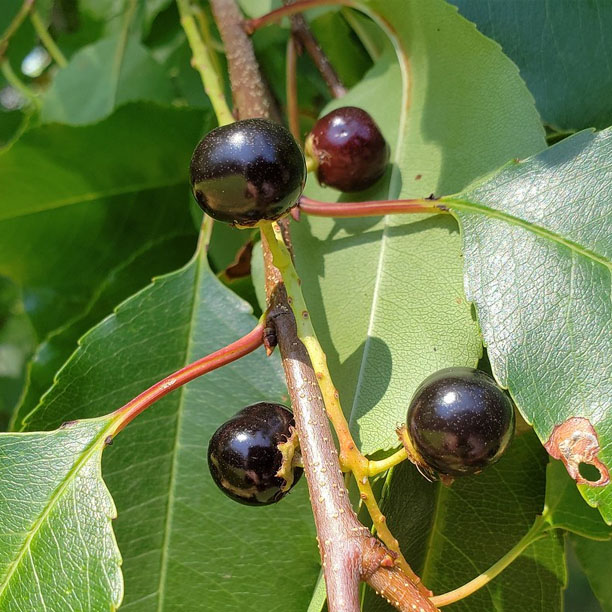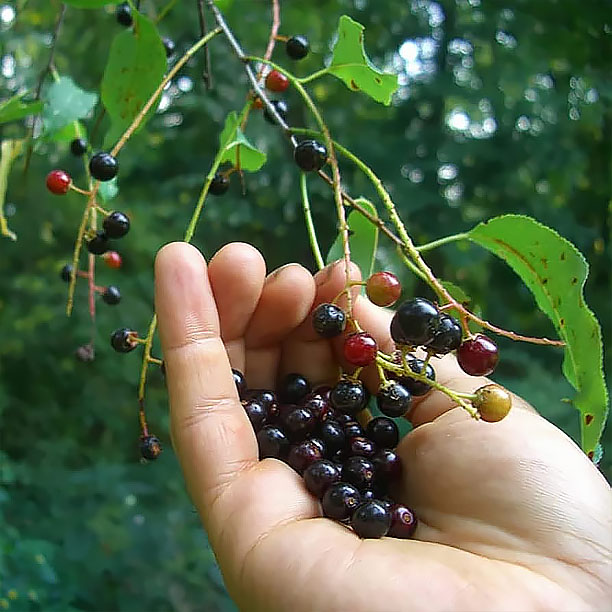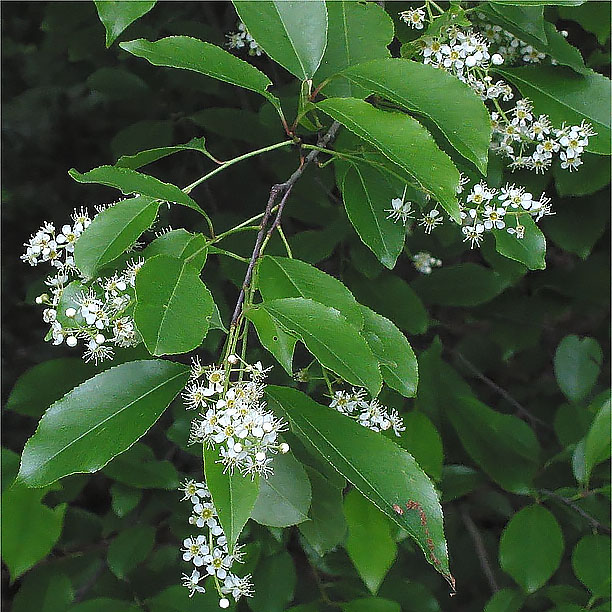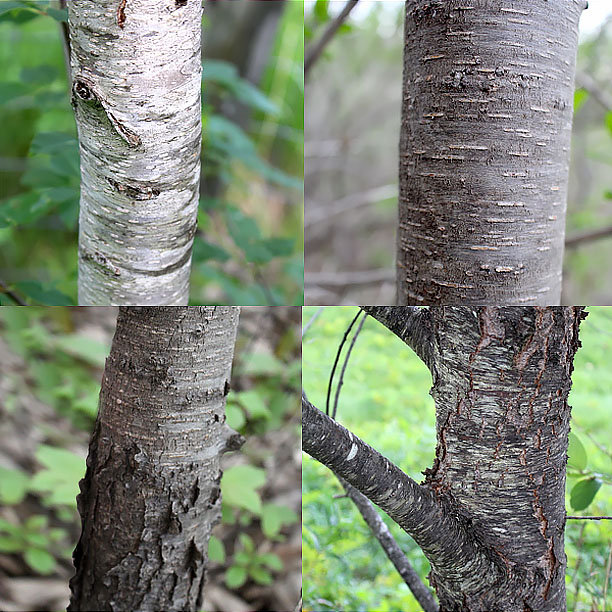Wild Black Cherry
How To Identify
Wild Black Cherry trees is a deciduous tree that can be identified by their leaves and by their bark. The leaves are oval with finely serrated edges. The bark of the wild cherry tree is reddish-brown and smooth. The bark has “lenticels” or small pores in the bark, which allow cells below the bark to ‘breathe’. The tree can also be identified by its beautiful white blossoms in the spring. The cherries will develop as small green fruits where blossoms were through the late spring and early summer and will turn a red or purplish color through mid-summer.




Benefits
The fruit of the wild cherry, like most berries, are high in vitamins and antioxidants and have a sweet and astringent flavor. Generally, the only part of the tree suggested for use is the fruit.
How To Find
It grows in woodlands or on their edges, near streams and in rich and non-acid soils. Normally these trees will prefer an alkaline soil but can be found in areas that have coniferous growth interspersed with the deciduous trees.
The tree’s white blossoms will appear in early spring before the leaves appear.
The fruit ripens in mid-summer and are red to dark-red, hanging in clusters on long stalks. The cherries are edible and have one stone inside. The cherries are smaller than those from the cultivated trees are more bitter.
Gathering
Gathering the fruit of the wild in mid-summer once it has ripened can be a challenge as it is a favorite of the birds and squirrels in the woodlands. Most people will break the stem off at the branch leaving it on the fruit to preserve its freshness. Cherries pulled from their stems will rot quicker than those left on the stem.
How To Use
Wild cherries can be eaten fresh, steamed for their juice or made into jams or preserved for pie fillings. The cherries can be de-stoned, dried and used in teas or as dried fruit in baking.
Preservation
Preservation wild cherries can be done by freezing, dehydrating or freeze drying.
To preserve the fruit, it is recommended to remove the stones beforehand. They can be dehydrated using very low or no heat in a standard dehydrator or freeze dried. Oven drying isn’t recommended as the heat can damage the medicinal benefits.
Some people make syrups, jams, jellies or pie fillings as well.